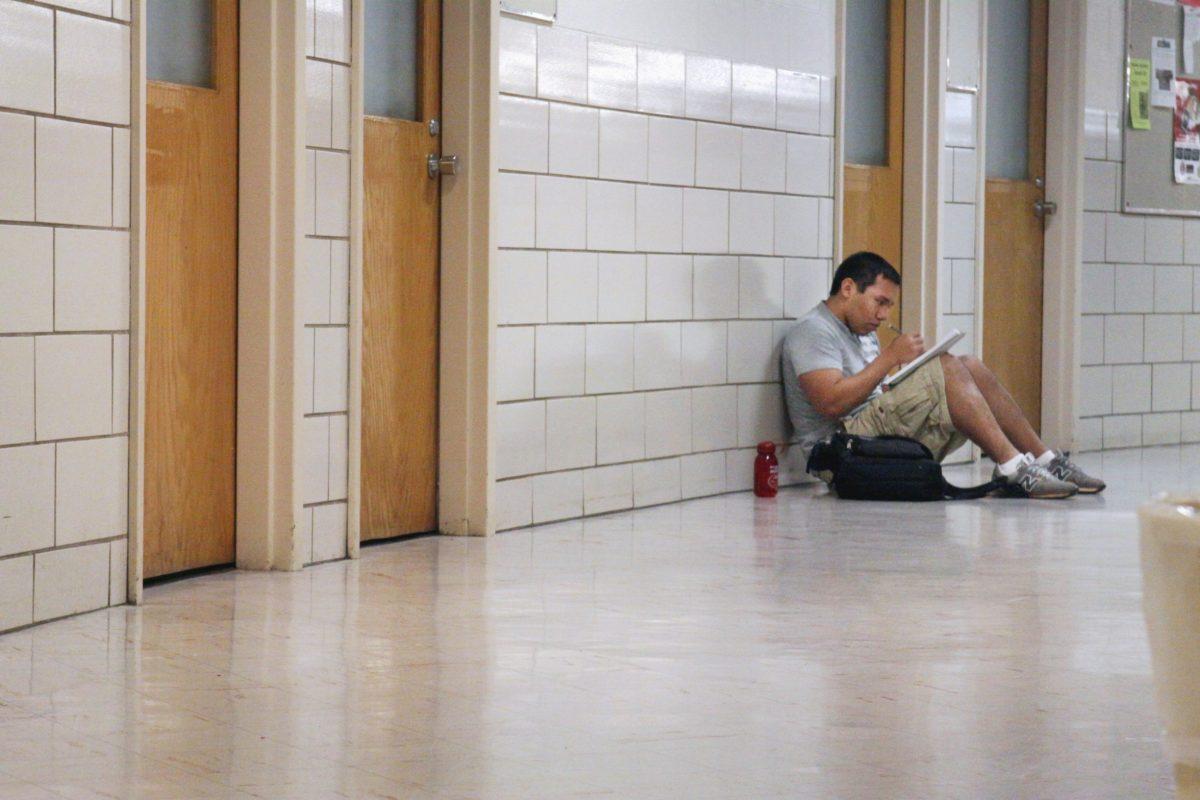One of two non-brick buildings on main campus, Harrelson Hall has been a part of campus since its completion in1960.
According to Mike Harwood, University architect, it was designed to be a “teaching machine” and a paradigm of efficiency; Harrelson reflects the utilitarian ideology of the ’50s.
“Designers believed they could save the world through architecture,” Harwood said. “Efficiency was a top priority.”
Harwood said the plan was to implement the qualities of an ideal classroom such as good sound resonance, optimal viewing of the instructor and maximum space utilization. This resulted in the circular shape of the building.
The pie-shaped classrooms, with their elevated seating, direct focus onto the instructor and help students in even the farthest rows to hear their instructor. Concurrently, the shape of the classrooms assisted in maximizing usable space within the building. It was the first cylindrical classroom structure ever built on a university campus.
As years passed, and society and state building codes changed, Harrelson’s unconventionality lost its initial intrigue.
Part of the Bond Program in 2000 included a study on renovating the building, and uncovered many flaws that didn’t meet today’s building codes. This report resulted in shifting funds initially intended for use for Harrelson to be redirected into building SAS Hall.
“There was no SAS Hall project until this study, after which we asked the legislature to switch from renovation to rebuilding,” Harwood said.
Renovation of the building to bring it up to code, though cheaper than replacing it, would result in a 35 percent reduction in classroom seating capacity. The University decided complete rebuilding was the best use of funds.
According to Harwood, lack of funding is to blame for why the edifice still stands despite years of supposed intent to replace it. Relocation of classes from buildings that are being renovated makes it difficult. Before Harrelson gets started on Broughton Hall must be renovated, chemistry classes must be moved to Broughton and Dabney Hall must be renovated. Then Harrelson will get torn down.
“Realistically ten years to get funded, designed, completed, people moved, etc.,” Harwood said when asked for an estimate on when Harrelson would be completed. No committee is currently in charge of the Harrelson project, he said, because plans are so far off.
Rebukes of the building are shared by a vast number of students. One of the most rampant rumors about the building, that it is sinking, is amusing to Harwood.
“The building would crack into pieces of it were sinking,” Harwood said. “I try to negate myths such as this when I speak to orientation counselors.”
Other oddities distinctive to Harrelson are its lack of windows in the classrooms, the shortage of women’s restrooms, its labyrinth-like halls and the elevator.
Harwood said the lack of women’s restrooms is due to the overwhelmingly male student population of the campus during the time in which it was built; few female students attended the University at the time thus restrooms for them were not a major concern.
During the ’50s and ’60s it was common for windows to be excluded from classrooms, as is reflected in Harrelson, he said. University offices circumscribe the building and are the sole rooms receiving natural light.
An issue recognized by both students and Harwood is how difficult it is to find your way through the hallways of the building.
“To me the most interesting thing about Harrelson is that you can never go around a corner in a round building. It’s hard to remember what color stair, left or right. It is a sort of optical illusion,” Harwood said.
Other than the lack of cell phone service, Anna Gillespie, sophomore in criminology, said the most irritating thing about the building is its complicated layout.
“First you have to find your floor, or the right door to walk in at the top of the stairs, and then you have to find the room number which can be confusing because they go in a circle,” Gillespie said.
When asked what he found odd about the building’s exterior, Jake Singerling, sophomore in biological sciences, compared it’s façade to an alien space craft.
“Well, I think the strangest and weirdest thing about Harrelson is definitely the small window thing on the middle of the roof. It makes the building look like a UFO,” Singerling said.
According to the facilities Web site, nearly all undergraduate students attend class in Harrelson at least once.








